Warriors of Culture "Funerary Urns Fields"
Funerary urn. Museum Marburg, Hesse, Germany.
Let us first make a small chronological table of the most important events of this interesting era. Here it is, in front of you:
1. The end of the Mycenaean culture, which is attributed to a conditional date around 1200 BC. e.
2. Destruction of Troy VI around 1200 BC e.
3. The battle of Ramses III with the "peoples of the sea", 1195 - 1190 BC. e.
4. The end of the Hittite power 1180 BC. er
5. Philistine settlement in Palestine around 1170 B.C. e.
Well, what was at this time in Europe? And in Europe, somewhere from 1300 to 300 BC. er the whole territory from the Baltic coast to the Danube and from the Spree River to Volyn existed the so-called Pudzhitska culture, which is interesting for us, first of all, because its representatives somehow suddenly changed very quickly ... all their funeral rites! Before that, in the vastness of the East European Plain there existed cultures of the disposition - the pit (corpse in the pit), the log (corpse in the log of logs), the catacomb (the corpse in a special burial chamber). And then suddenly - r-aaaz, and the corpses of the departed began to be subjected to cremation, and what was left of it, put in a large earthen vessel and bury. Without any mound, mound or mound, although before that mounds and poured. And the first mystery - why would it? What is (if, of course, to exclude Atlantes and aliens from outer space) was to happen in the society of that time in order to change so radically from people the most inert that they have in their spiritual culture - attitude to the dead ?!
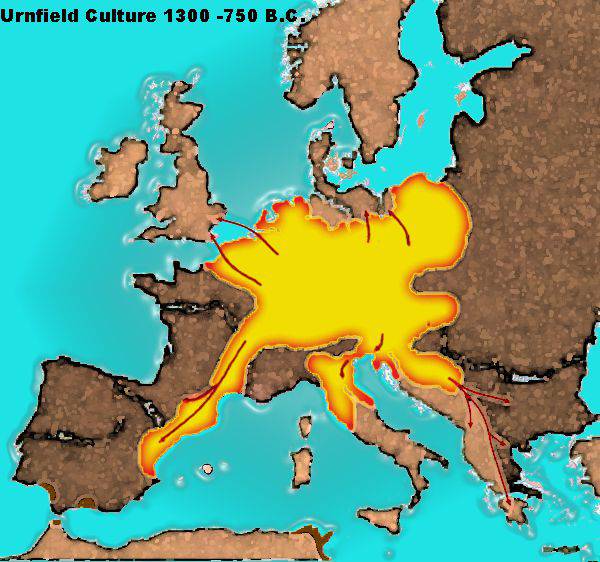
Map of the culture of the "burial urn fields".
That is, the entire area of the previously existing culture of kurgan burials suddenly reformed the funeral rite, and in just one or two hundred years, and then spread throughout Europe, and it was no longer a Pomeranian culture as such, but a single culture of cremation of the departed. The area of its distribution was a very vast territory from Western Ukraine to eastern France, and this culture was called the culture of the “burial urn fields”.
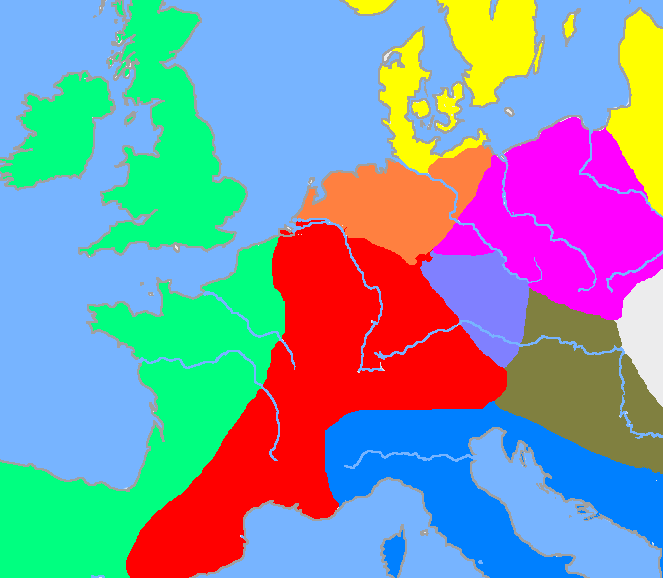
Schematic representation of the cultures of the Late Bronze Age of Europe, around 1200 BC. e .: luzhitskaya culture (purple), culture Terramar (blue), central culture of fields of burial urns (red), northern KPPU (orange), Knovizskaya culture (purple), Danube cultures (brown), atlantic bronze (green), nordic bronze (yellow).
In the name of the culture, its characteristic feature played a role - the presence of burial grounds without embankments. If such a burial is unearthed, then clay vessels can be found in the grave, in which there are remains of death burnings and ... everything! It has been established that its occurrence is associated with the Lusatian area, and the area is relatively small. But as the inhabitants of this region brought their funeral rites to other places and inspired them to the inhabitants, that “it is necessary so, but not as before!” That its inhabitants made long hikes, conquered and settled all the lands from the Baltic Sea to the south, through Alps and to the modern Adriatic and the Apennines? Or did they specifically send emissaries who carried the truth about the proper burial to the nations ?!
Reconstruction of settlement luzhkoy culture. Museum in Biskupin. Poland.
American historian Robert Drews suggested that the observed cultural changes may be the result of new methods of warfare, based not on the use of chariots, but on the dominance of infantry warriors armed with long spears and the same long slashing swords. This change caused political instability associated with the emergence of these new troops, where war chariots were the basis of the armies, and this instability, in turn, led to the fall of the ruling dynasties and entire states. And if earlier there was a caste of warriors who fought with wooden handles with piercing swords, which they needed to be able to fight, now they have been replaced by “armed people” armed with Naue Type II swords. This sword, which appeared in the eastern Alps and Carpathians around 1200 BC. e., quickly spread throughout Europe and became the only type of sword in the XI century. BC er But the blades of such swords bent. Therefore, very soon bronze was replaced by iron with little or no change in the design of the blade, but the handle of the sword was cast bronze. At the end of the era of the fields of the burial urns, that is, in the Hallstatt period, swords reached the length of 80-100, that is, they became extremely powerful weaponsable to do away with any adversary.
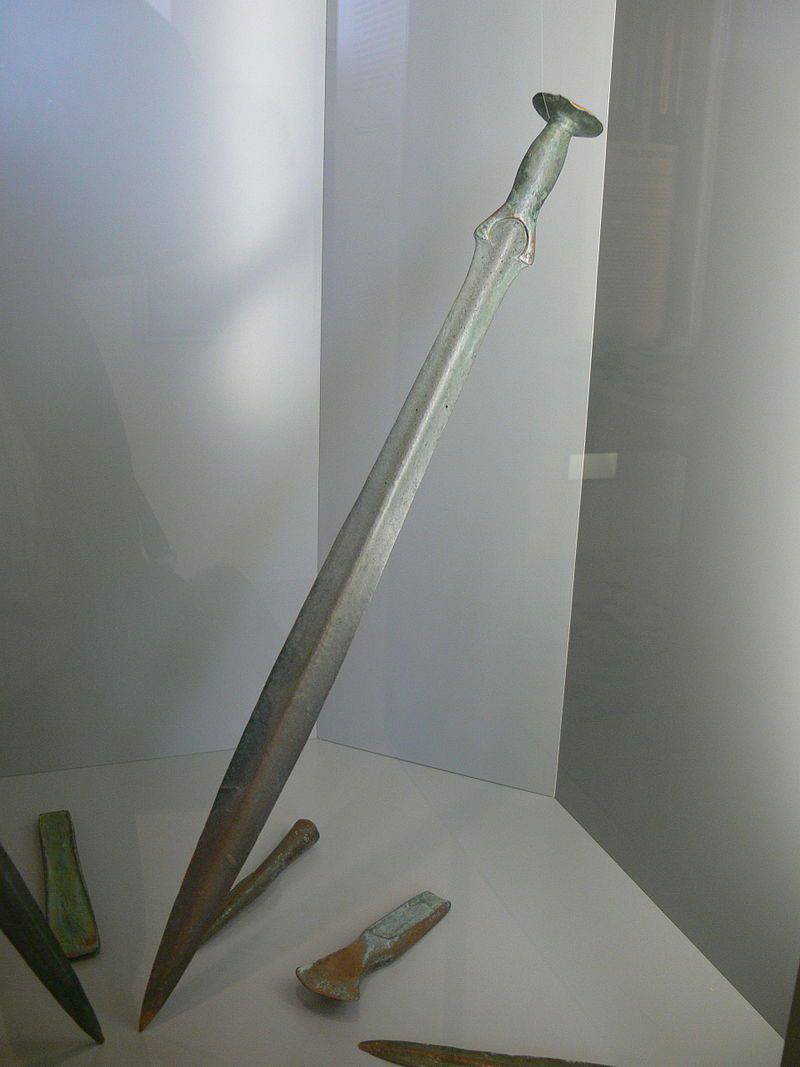
Sword culture "fields of burial urns," found in the river. Museum in the castle in Linz (Upper Austria). This is quite a military weapon, as indicated by the presence of a counterweight on the handle.
The shape of their arms differed depending on the region, so that several types of them are distinguished, each of which has its own characteristics. They also acquired great importance spears, which were apparently armed proto-hoplites. It is not for nothing that Homer uses the word “spears” as a synonym for the word “warrior,” which indicates an increase in the number of spears during his war. Warriors with large shields and long spears, capable of repelling massive chariot attacks, could defeat states whose armies were based on the use of chariots by the military elite of society, while ordinary tillers and hunters were excommunicated from professional military affairs.
Bronze swords from Hungary in the British Museum.
Other scientists consider this approach to be somewhat superficial, but ... the culture of the fields of the burial urns at the end of the Bronze Age painfully unexpectedly appeared. And very soon, its carriers seized, in addition, also iron metallurgy - the production of iron weapons and labor tools. Well, some time later in Europe, burial grounds began to appear in which the burials of the burned ashes were found, but without urns, that is, they were considered redundant!
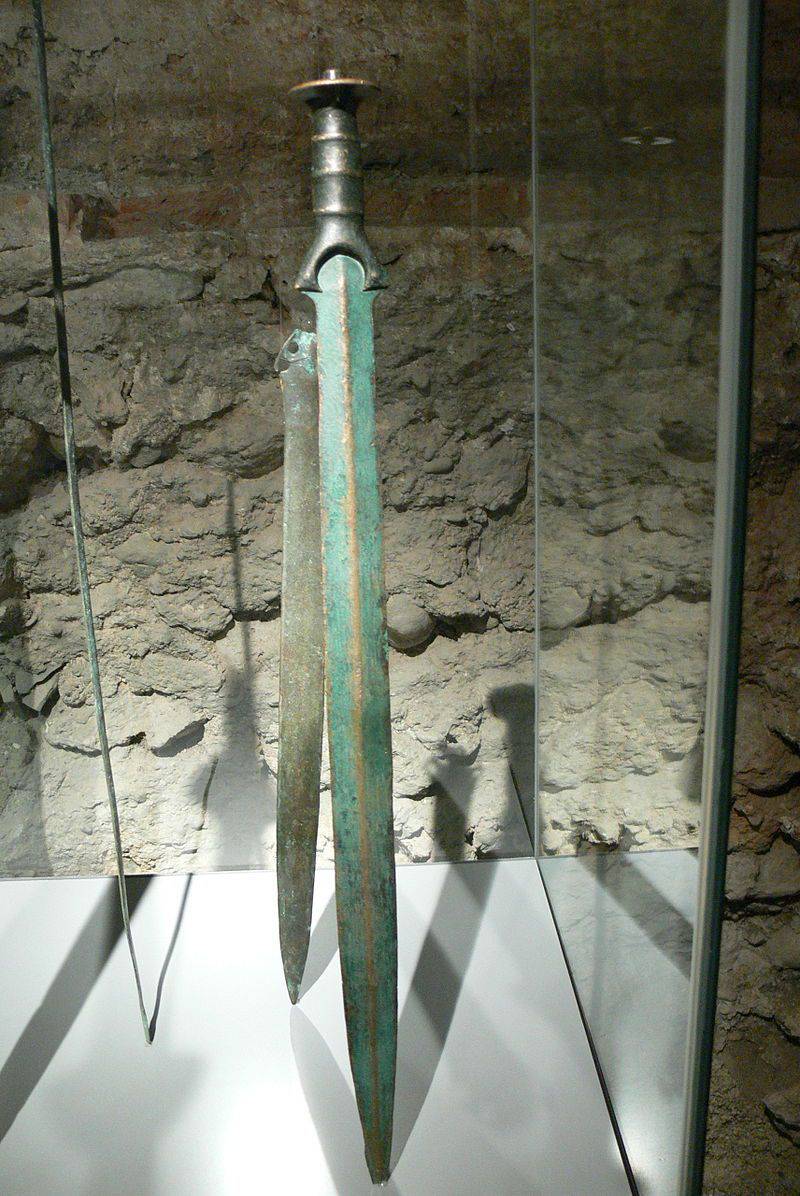
Sword from the city museum of Welz (Upper Austria).
As a Czech archaeologist of the second half of the 20th century, Jan Filipp writes about this time: “The culture of the fields of the burial urns unexpectedly emerged at the turn of the second and first millennia in a large part of the Danube region and in the south German region of kurgan burials, as well as in northwestern France and Switzerland . Everywhere we find burn burns, we notice similar cultural equipment everywhere. ”
Bronze tips of spears from the fields of burial urns. (1400 - 750 BC) and Hallstatt Culture (750 - 250 BC). Museum in Carinthia, Austria.
From the data of the Czech historian, it is necessary to single out the information that with the replacement of the Kurgan culture with the culture of the burial urns, the approach to the selection of a place for settlements has changed significantly. The new culture has become, above all, characterized by such characteristic features in the organization of settlements as security from attacks. That is, they were all located in places convenient for protection. And the settlements themselves were also strengthened by ramparts made of stones or logs. On the other hand, many areas were deserted and it is not clear why, although judging by the findings, people lived here before. Lived, but with the advent of iron tools left their homes and left! Where are the people gone in the beginning of the Iron Age? Unknown!
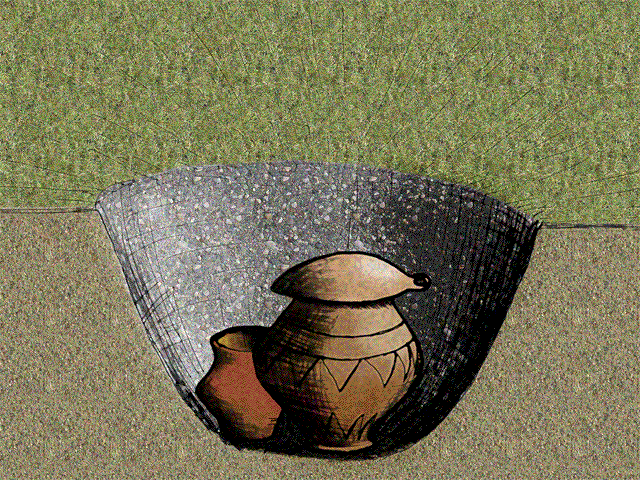
This is how the burial of the culture of the fields of burial urns looked like.
On the other hand, simultaneously with the formation of the period of the burial fields in the urns, gold mining is also clearly progressing. Gold becomes an attribute of the highest nobility, and, importantly, it also acquires ceremonial value. All found burial grounds testify to the special position in the society of a man - that is, gold jewelry is found, first of all, in men's burials. They also find treasures of bronze items. They were buried because of their value, it is obvious. That is, the life of people on the territory of the “burial urn fields” was full of dangers, and taking care of hiding wealth on a “rainy day” was not a bad thing.
Many funerary urns. Museum Marburg, Hesse, Germany.
And here we have a causal relationship: a sudden, unjustified change of the funeral rite on a vast territory, on the one hand, and on the other, a clear increase of military activity on it, from which people tried to isolate themselves with shafts and walls.
But material - material, and how to explain such a sharp change in the funeral rite - a phenomenon related to spiritual culture? Scientists are trying to explain it by a dramatic change among the inhabitants of Europe of the concepts of life and earthly life and life after death. That is, it can be assumed that for some reason people of this culture have begun to believe that when the body is burned, the soul of the deceased quickly flies to the sky. That is, until it is his spirit gets out of the earth to the light of God (or even go to the dark underworld?). And then ... he put it on the fire, he poured oil on it, set it on fire and ... once or twice, and the soul, along with the smoke, flew right before your eyes to the sky. And you are standing with a long bronze sword at your belt and you think what else nearby settlement would be plundered!
Ancient fortification atop a hill in Burgsthalkogel, Austria.
"The order of deliverance from the departed is repeatedly perceived as one of the most peculiar customs of this or other people, which is especially firmly maintained for a long period of time." (G. Child) Such a quick break-up of people's consciousness is unthinkable, and yet it happened! What could force people so suddenly to change their ancestral habits? In addition, after some time, people returned to the old kurgan system. This "restoration" has captured large areas of Europe - from the Czech Republic to France. However, in archaeological finds, both forms of burial are now tracked, that is, pits with urns and barrows, too, with or without urns, side by side with each other.
By the way, why such attention to the cultures of the “burial urn fields” was given by a Czech archaeologist is understandable. After all, it was precisely on the territory of the Czech Republic that there was a Knozow culture close to Luszka, dating back to 1300 - 1050. BC er
A characteristic feature of it was the development of blacksmithing. For example, the vessels there were made of forged bronze sheet. In the river Vltava, they found a sword, the handle of which was decorated with volutes. But also found signs of cannibalism. Alas, not only the naked tropical savages ate each other. Civilized, of course, in their own manners, the Europeans of the Bronze Age also dealt with this matter, but for what purpose it is difficult to say.
The easiest helmet of the Bronze Age. "Funeral urn fields".
The end of the era of burial urns fields came in the VIII century. and was again connected with the relocation to Europe of new masses of newcomers, both from the north, and those that went through the Black Sea Steppe Corridor.
Entrance to the Museum of Pudzha architecture and life in Biskupin. Poland.
Museum of Pudzha architecture and life in Biskupin. Poland. This is how the ancient settlement had a wall.
Well, and finally, what does the author himself think about all these changes, both in the material and spiritual culture of the people of this time? What if culture then (the culture of people in general) was much higher than we used to consider it. That people did not isolate themselves in their close world of the clan-tribe, chicken coop and barn, but they knew and understood that they belong to a powerful human race that controls the world around them and ... that other people are also people, even if they speak an incomprehensible language . Yes, they can serve as an object of trouble (when robbing you!), But also an object of increasing your own well-being, when you rob them! But at the same time there were some sacred prohibitions on the killing of travelers and merchants. Perhaps there was a cult of commerce dedicated to the traditions, and there were clans of translators, reconnaissance travelers, ambassadors, and merchants who carried out long hikes and enjoyed the right of immunity.
Religion was solar, that is, solar, as evidenced by symbols on ceramics and ornaments. And they had their own prophets and messiahs, no less significant than the Buddha, Christ and Mahomet, whose ideas were imposed (or transferred!) To other nations not only by force, but also by example. But there was no written language (which means they had both excellent storytellers and compilers of oral works). Different languages were not an obstacle to communication, as well as language differences among the Indians of North America. They communicated using the language of signs, which helped to establish communication between people who lived thousands of miles apart. However, only the sword and his personal physical culture made him free. The lot of those who "did not meet the requirements of the time" could be slavery, and even something worse ...
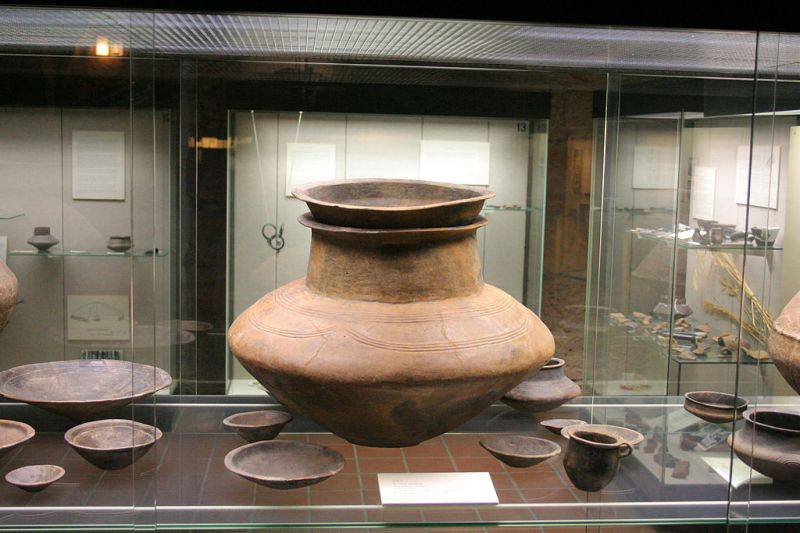
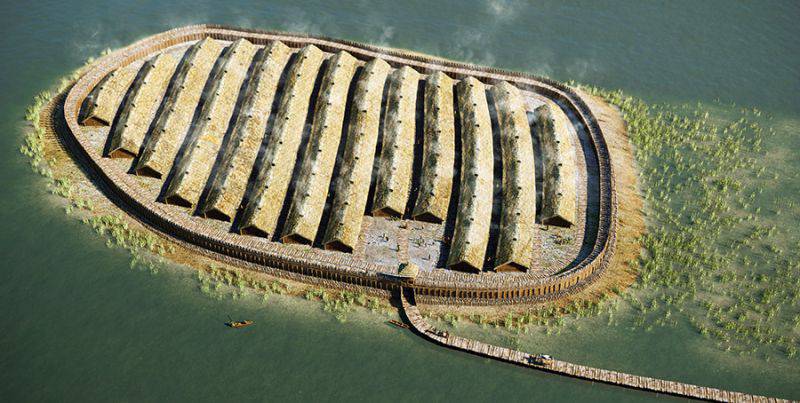
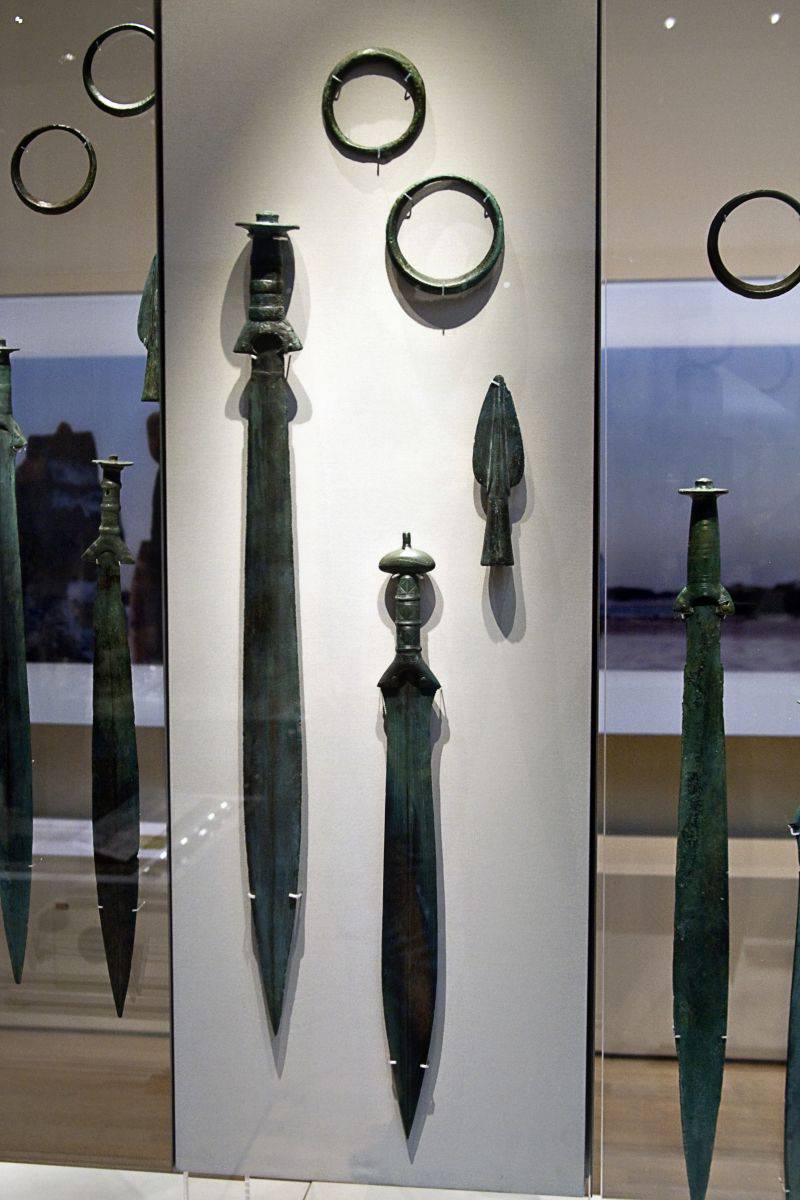
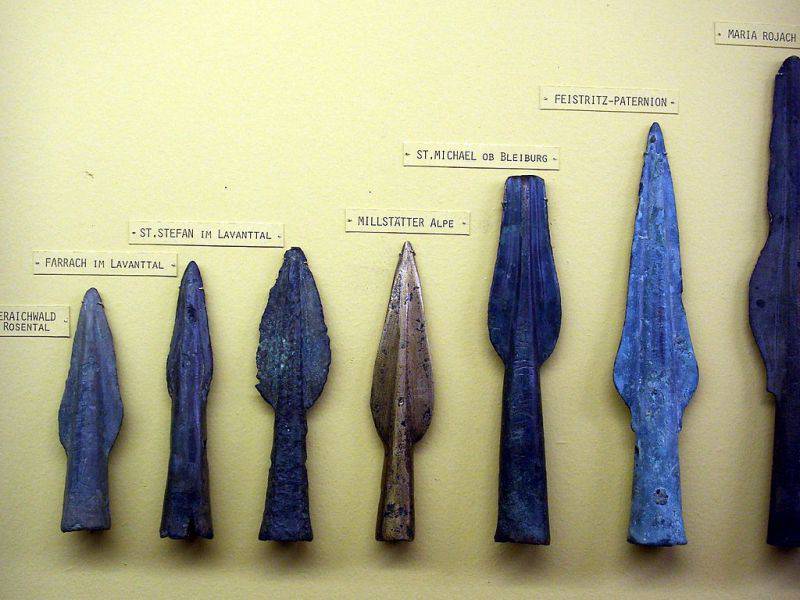
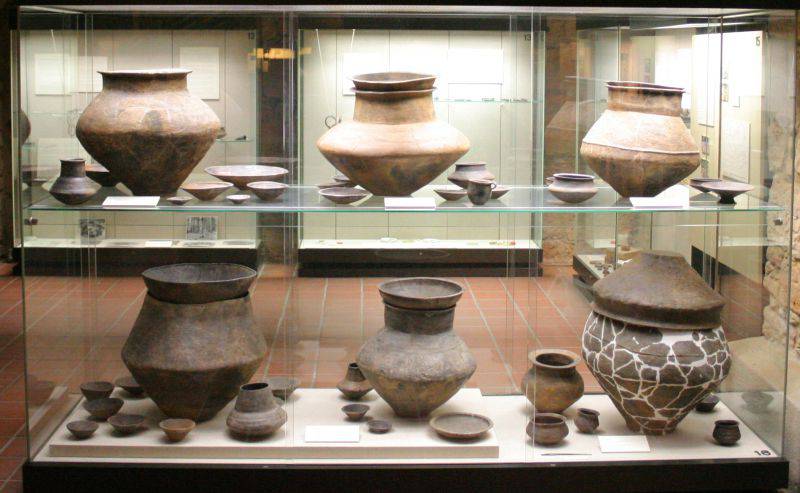
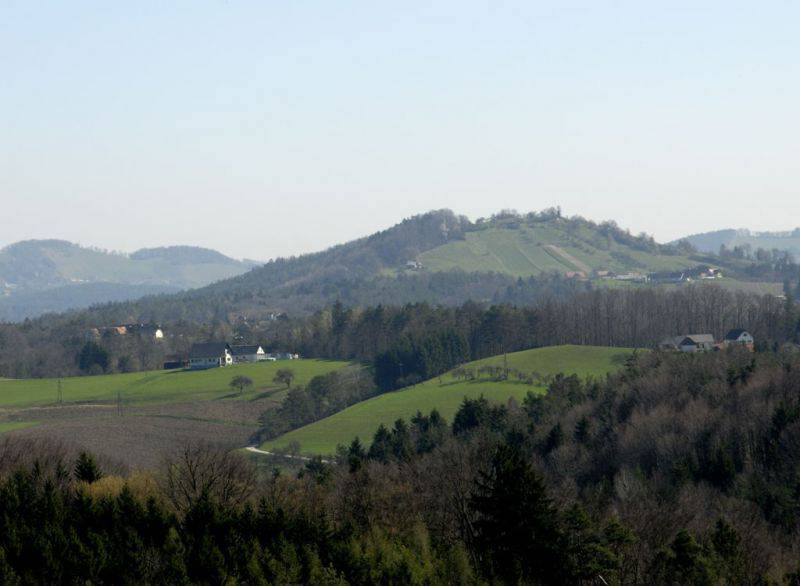
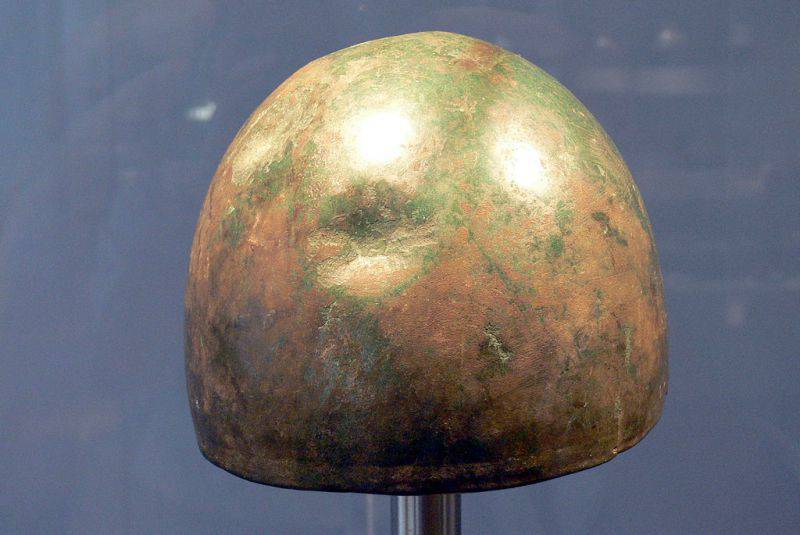
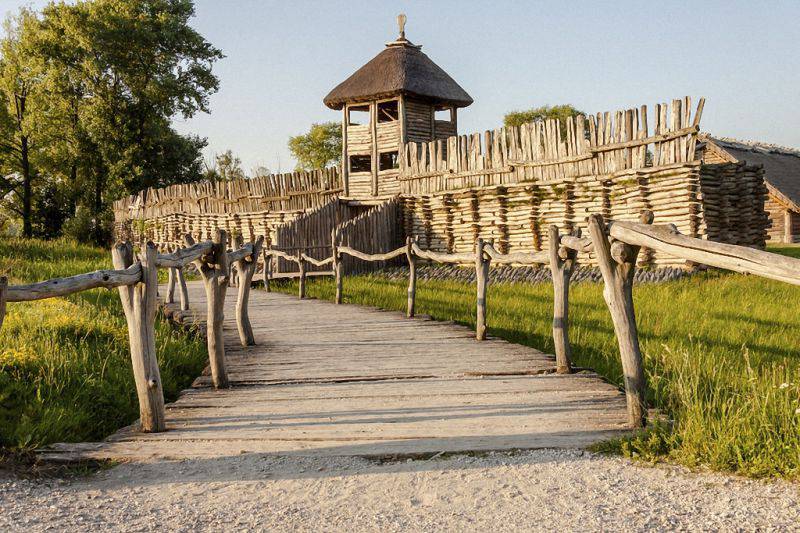
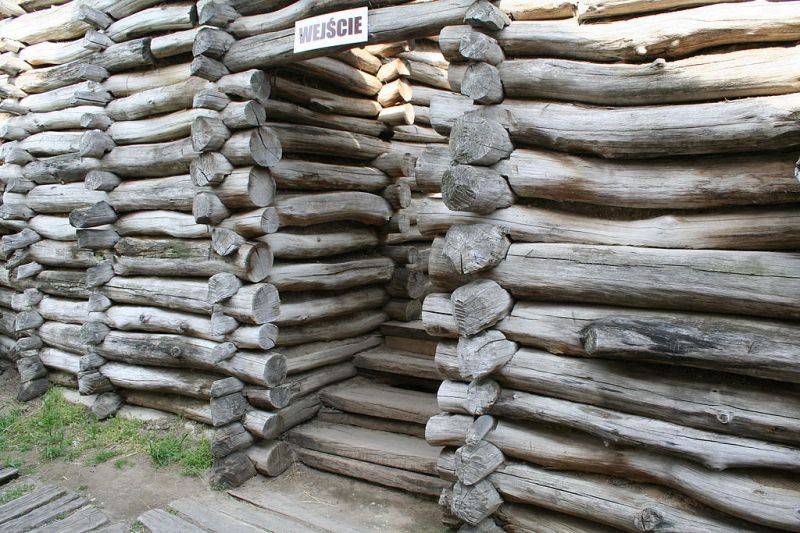
Information